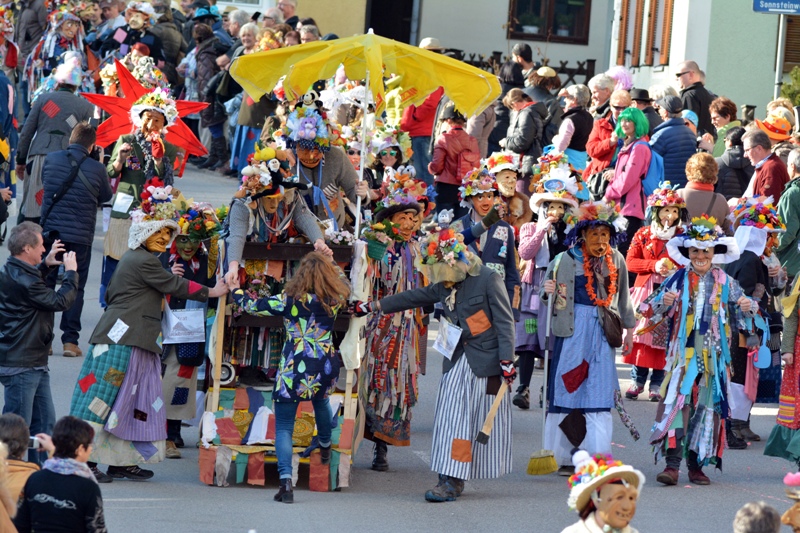The Rag Procession in Ebensee
Social practices in Upper Austria, inscribed 2011
The Ebensee Rag Procession is a carnival procession held each year on Shrove Monday in the Upper Austrian town of Ebensee. The participants, called “rags”, dress up in old women’s clothes with rags sewn to them. They also wear hats made of rags and elaborately carved wooden masks. The most important element of the Rag Procession is what is known as the "Austadeln" (chiding) of the spectators.
The procession participants gather at an inn in the neighbourhood of Kohlstatt and then process to the Ebensee town hall. It is during this procession that the Austadeln takes place: under the cover of their costumes and disguising their voices to ensure their anonymity, the “rags” playfully give their fellow citizens a piece of their mind and play tricks on them. The colourful activities are accompanied musically by the “Umbrella March”, also known as the “Rag March”.
Since its beginnings some 120 years ago, the Ebensee Rag Procession has become an integral part as well as the culmination of the carnival season in Ebensee. It constitutes an immanent element of Ebensee’s community culture. The custom of the Ebensee Rag Procession has always been passed down and maintained orally. An important role in this tradition is played by families, who pass this custom on to their children, thus keeping it alive from generation to generation. Since its founding, the Ebensee Carnival Association has also assumed a key role in maintaining the tradition of the procession.
Over time, the Ebensee Rag Procession has continued to evolve in various ways and take on new forms. For example, not only the starting point of the procession has changed but also the participants’ costumes, which adapt regularly to reflect the fashion and the living standard of the respective time. While at times it was customary for the participants to paint their faces, later it became common practice to wear wooden masks, produced by local woodcarvers.
Contact
Downloads
- Application form (in German only) 2 MB (doc)
- Expertise Haid (in German only) 35 KB (doc)
- Expertise Bockhorn (in German only) 25 KB (doc)


![[Translate to EN:] © J. Ségur/ZED, with the permission of UNESCO](/fileadmin/_processed_/d/b/csm_Convention-2003-IKE_0832a6a47d.jpg)
![[Translate to EN:] © ÖUK](/fileadmin/_processed_/3/9/csm_P1011318_7eac86402f.jpg)

![[Translate to EN:] © Weitblickfilm](/fileadmin/_processed_/9/8/csm_Workshop_17_2dee1e1fd8.jpg)